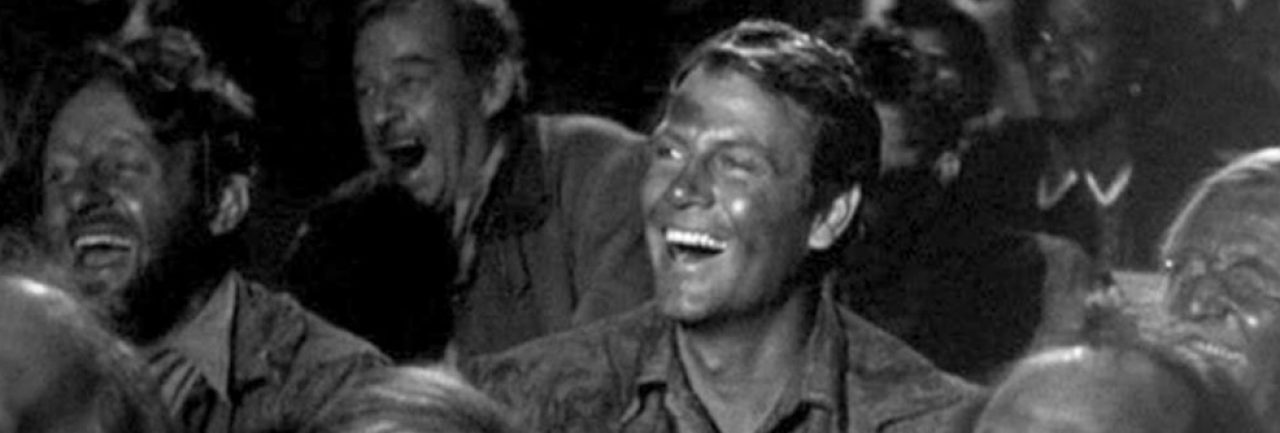
Like a lot of people, I guess, I’ve been able over the last nine months or so to catch up with some (not enough) movies I somehow never got around to seeing. A few weeks ago, I watched Michel Gondry’s Eternal Sunshine of the Spotless Mind (2004) and enjoyed it quite a bit, including learning that the title is a quote from the 18th-century English poet Alexander Pope.
The movie has an ingenious premise and plot, which gradually reveals itself, so I’ll try to resist any spoilers, only say that in this scene, some ragtag scientists (played by Mark Rufalo, Tom Wilkinson and Kirsten Dunst) have hooked Joel (Jim Carrey) up to a machine that extracts memories, and thus the movie-in-movie scene is a flashback. Joel and Clementine (Kate Winslet) are at a drive-in — actually outside a drive-in — where for some reason the feature is a 1958 exploitation flick, Monster on the Campus. (IMDB plot summary: “The blood of a primitive fish exposed to gamma rays causes a benign research professor to regress to an ape-like, bloodthirsty prehistoric hominid.”)
Here’s a clip (you can ignore the opening seconds, where a tiny Carrey is submerged in a sink):
One notable thing about the scene is that, as Carrey improvises some Mystery Science Theater 3000-type dialogue to the absurd happenings on the screen, it’s the only moment in the film (as I recall) that he exercises his considerable comedy skills. Another is that, surprisingly enough, Monster on the Campus was never actually featured on MST3K–although, according to one fan of the show, it should have been.


